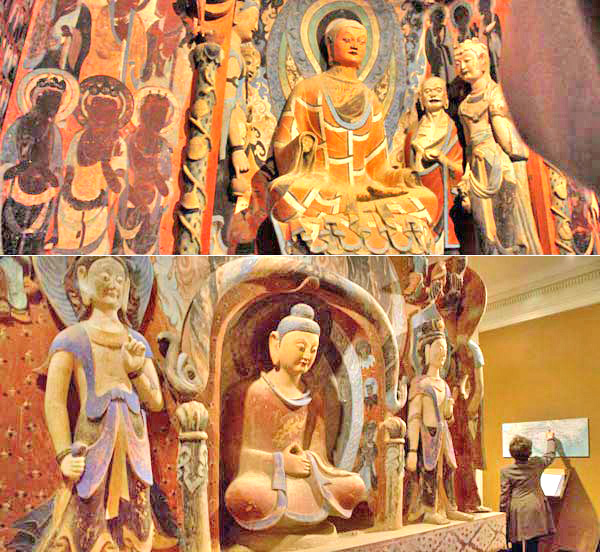Mogao Grottoes opened to the world

The project Digital Dunhuang by the Dunhuang Academy of China utilizes high-resolution photography to collect digital images of the caves, sculptures and murals in the Mogao Grottoes.
This year marks 1,650 years since the Dunhuang Mogao Grottoes were established. For the last six months, a number of officials, scholars and experts have come from around the world to the Mogao Grottoes to attend academic forums, exhibitions of cultural relics, concerts and various events to celebrate its birthday.
On the ancient Silk Road, Dunhuang was a center for commercial activity. The Mogao Grottoes accumulated an abundance of Buddhist art that has been identified as global cultural intangible heritage. But, over the years, the destruction of the natural environment and the time have gradually taken their toll on this Buddhist art. A repository for Dunhuang culture, the Mogao Grottoes have fortunately been preserved and made publicly accessible through technological measures.
Historical records reveal that the Monk Lezun excavated the first cave in Dunhuang in 366 during the Western Qin Dynasty. The excavation of grottoes continued for more than 10 dynasties, lasting almost 1,000 years. The Mogao Grottoes have experienced ups and downs as they rose, were discarded, and reborn over the course of sixteen centuries. The excavations of the Mogao Grottoes encountered difficulties and the grottoes suffered from mismanagement under unofficial supervision.
The Mogao Grottoes are known for having a wealth of culture, bringing together the characteristics of four great ancient civilizations. Now, the grottoes are facing both opportunities and challenges for further development.
Wang Xudong, the director of the Dunhuang Academy of China, indicated that the prosperity of Dunhuang culture and art benefited from local people’s desires and thousands of years of construction. Although the grottoes have experienced difficulties, they are still well preserved. The Mogao Grottoes are an important milestone in the nation’s progress, Wang said.
For almost 70 years, local people made their way through darkness in an attempt to protect the fragile grottoes. The launch of Digital Dunhuang and other technological methods now provides visitors from around the world a digital medium through which to enjoy the murals in Dunhuang. Technological restoration and digital exhibitions allow more people to participate in the integration of ancient heritage and modern technologies.
Wang pointed out that the Mogao Grottoes will be vulnerable. In the coming years, so there needs to be an emphasis on the sustainable development of studies on the Dunhuang caves and assessments of the threats to conservation.
The Dunhuang Academy of China will boost the establishment of risk monitoring and early warning systems for the Dunhuang caves. In addition, the academy will focus on the digital resource database of Dunhuang in order to rapidly implement the Digital Dunhuang project. In the following 10 to 15 years, the academy will emphasize protecting cultural heritage in Dunhuang and along the Silk Road and become an international platform for studies on Dunhuang.
In recent days, an Iranian expert came to the academy as a visiting scholar for long-term exchanges, which represents the first step in the Mogao Grottoes’ opening up and sharing strategy. Although numerous international cooperation projects focusing on the preservation of the grottoes have been carried out, the arrival of international scholars represents a new chapter for the academy.
Wang said the world is trending toward opening up and sharing, and doing so will enhance the protection of the grottoes, preserving them for the next generation.
